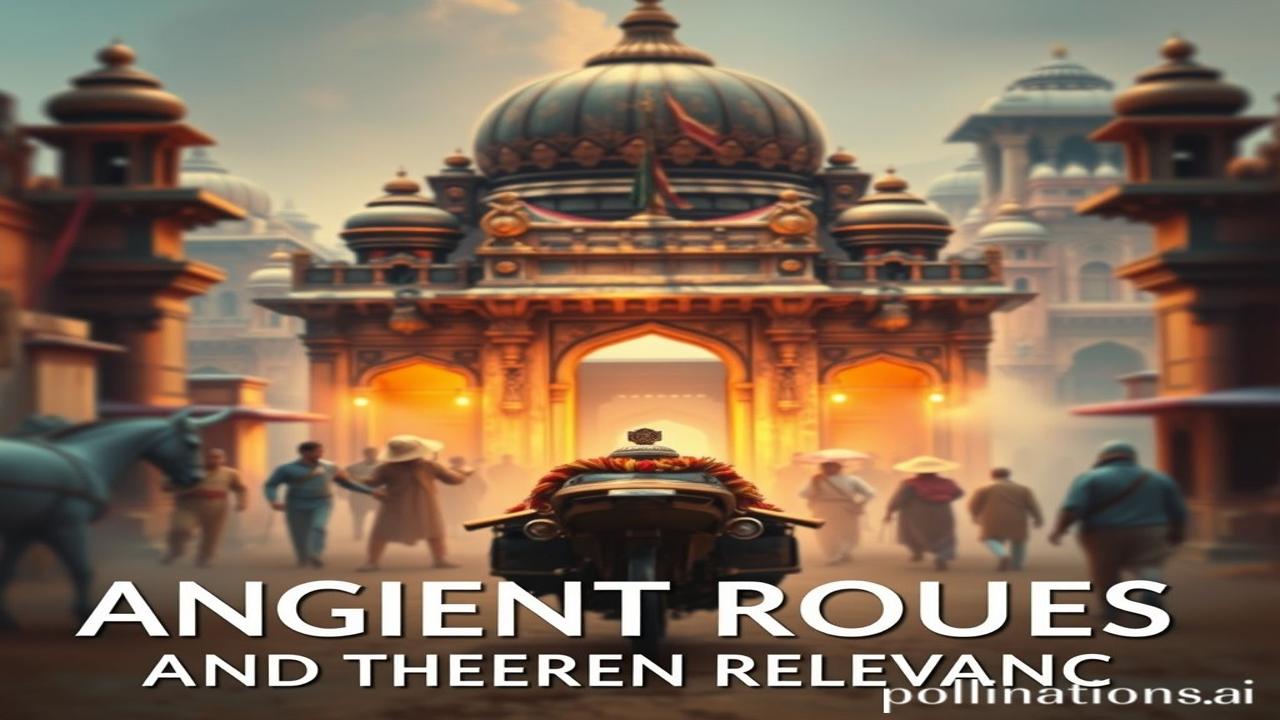Waqt Ki Dhoop Mein Gum, Vyapar Ke Rastey: Ancient Trade Routes and Their Modern Echoes
Kabhi socha hai, agar hum apne kadam wapas le jaayein, 2000 saal pehle, toh kis cheez ki khushboo aati? Shaayad spices ki, silk ki, ya phir un kahaniyon ki jo caravan ke saath ek sheher se dusre sheher jaati thi. Waqt ki dhool mein kuch aisi hi kahaniyan chhupi hain – ancient trade routes ki. Ye sirf rastey nahi the; yeh the dil, dhadkan, aur sanskriti ke woh dhaagey jinhone ek desh ko dusre se joda.
Itihas Ki Jhalak: Where Commerce Met Culture
What exactly are we talking about? Well, picture this: centuries before airplanes and the internet, trade routes were the lifeline of civilizations. These weren’t just paths for merchants; they were highways of knowledge, culture, and even disease.
When did they emerge? Some of the earliest trade routes date back to the Bronze Age, around 3000 BCE. Think of the Indus Valley Civilization trading with Mesopotamia, or the Silk Road connecting the East and West around the 2nd century BCE.
Why are they important? They weren’t just about exchanging goods. These routes shaped empires, spread religions, and influenced everything from our diet to our languages. Imagine – without these routes, there would be no pizza with tomatoes (imported from the Americas much later!) or chai, the essence of bharatiyata.
Zameeni Sach: Zindagi Ka Rang, Logo Ki Kahani
Imagine a trader, let’s call him Ravi, setting out from a bustling port in Gujarat. Maathe par tilak, jeb mein thodi si ashrafiyan, aur dil mein sapnon ka bojh. He’s headed towards the Silk Road, a journey that would take months, even years.
“Ram Ram!” he’d greet fellow travelers, sharing stories around a crackling fire. Some were heading to Persia for silk, others to Rome for gold. Ma Rukmini ne Ravi ko naye kapde diye the, unke ghar ki Lakshmi badhne ki aasha mein.
Kings, artisans, saints – everyone depended on these routes. The Mauryan empire thrived because of their control over key trade arteries. Buddhist monks traveled these same routes, spreading dharma and peace. Warriors guarded them, knowing the routes were as precious as any kingdom.
Dharohar Aur Pehchaan: Aaj Ki Bharat Mein
Do you realize how much these ancient trade routes still influence us today? Our love for spices, the intricate designs on our sarees, the stories we tell – they’re all echoes of those journeys. The “Make in India” movement, in a way, is a modern echo of India’s historical prowess in trade and craftsmanship. We are once again aiming to be a global hub, a “विश्वगुरु” in commerce and culture.
Even festivals are affected! Consider Diwali. We need gold for worship and prosperity, right? Now think of where the precious metals came from in ancient times. They travelled these routes.
Mazedar Tathya Ya Bhram-Bhanjak: Did You Know?
Log samajhte hain ki Silk Road sirf silk ke liye tha… lekin asli sach yeh hai ki it was a conduit for everything from jade and spices to religious ideas and technological advancements. Think of Buddhism traveling from India to China via this route!
Another fun fact: The Maritime Silk Road, often overshadowed by its land-based counterpart, was crucial for trade between India and Southeast Asia. This is where spices like pepper, cardamom, and cinnamon found their way to the West.
Drishya Aur Bhavnayein: A Sensory Symphony
Imagine walking through the ancient city of Taxila, a hub of trade and learning. The air smells of incense and sandalwood. You hear the rhythmic clang of a blacksmith’s hammer and the melodic calls of street vendors. The temple walls feel cool and smooth to the touch, whispering stories of empires past. The taste of jalebi sold on the street is sweet, a delightful reward after a long day of bartering. You can sense Shakti, or divine energy, in every corner.
Antim Vichar Ya Uddharan: A Journey Back to Ourselves
These ancient trade routes are not just relics of the past; they are the foundations upon which our modern world is built. They remind us that collaboration, exchange, and cultural understanding are essential for progress.
“वसुधैव कुटुम्बकम्” – The world is one family. This ancient Sanskrit phrase embodies the spirit of trade routes, a spirit that transcends borders and connects humanity. Let us learn from history and build a future where commerce and culture continue to thrive together.
